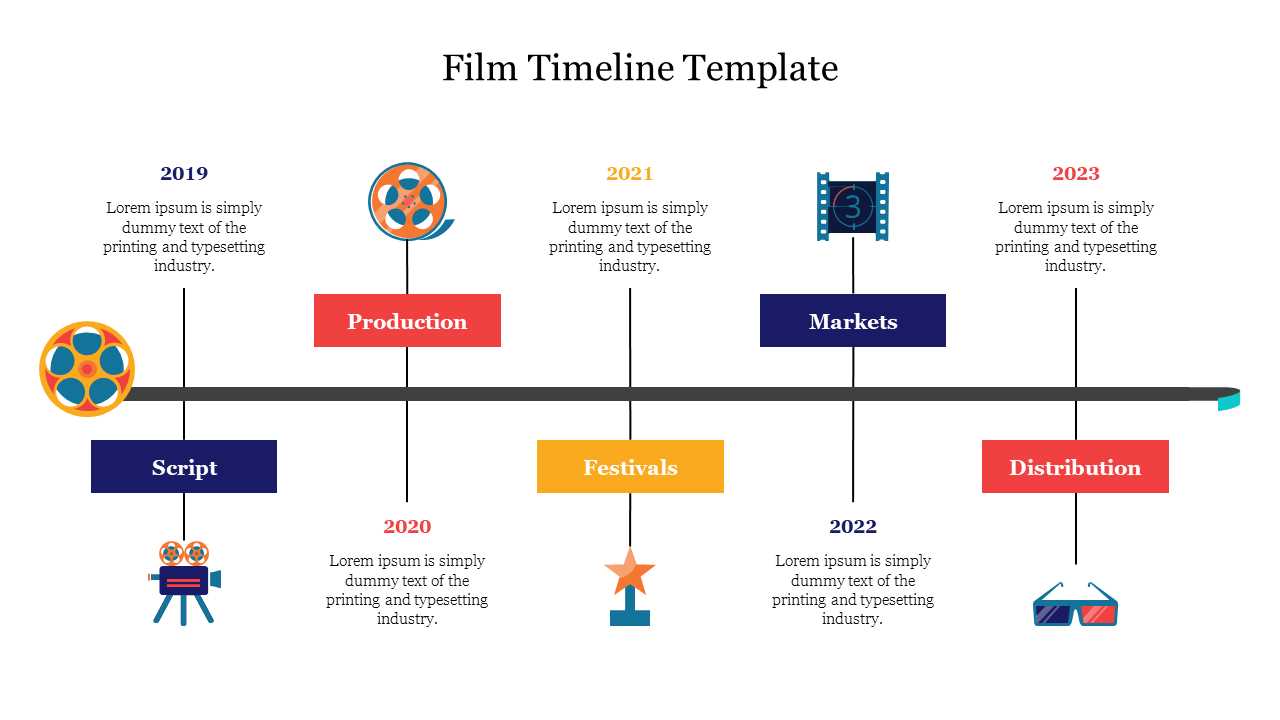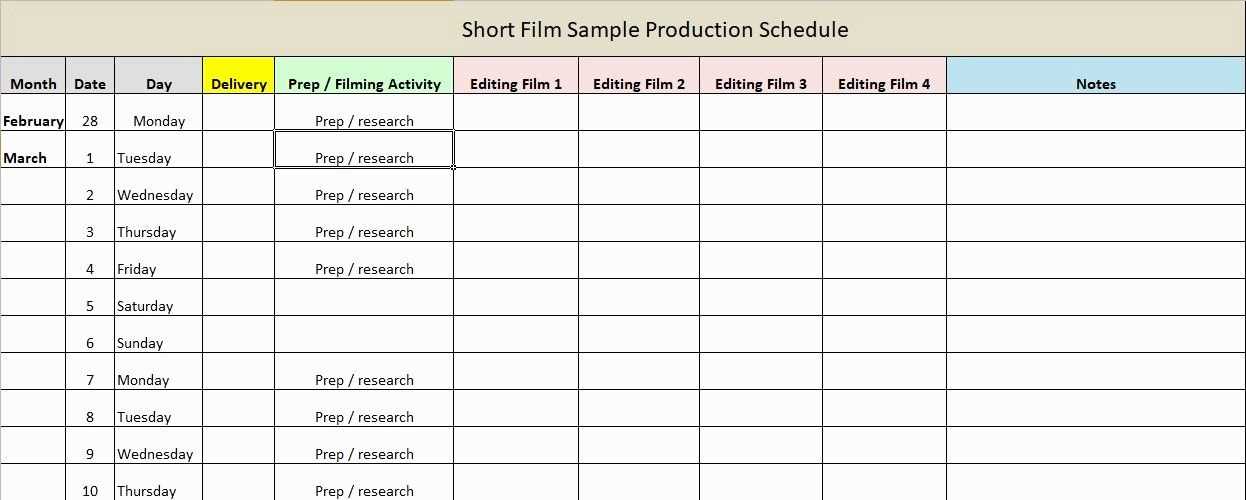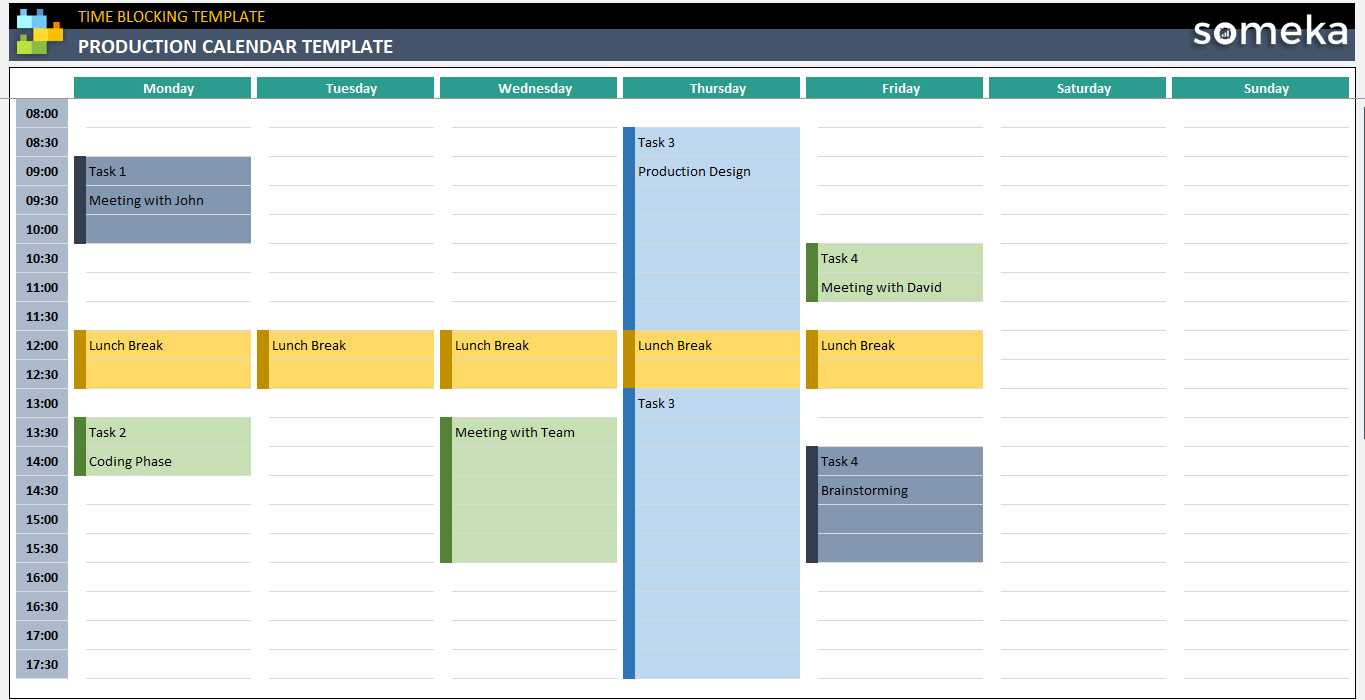| Organizing Post-Production Workflows
Efficient management of post-production processes is crucial for achieving a seamless final product. By implementing structured approaches, teams can enhance collaboration, reduce delays, and ensure that all elements are addressed timely. Establishing clear workflows allows for a smoother transition from editing to final touches, ensuring that every aspect is meticulously handled.
Key Steps for Effective Organization
To streamline the post-production phase, consider the following essential steps:
- Define roles and responsibilities within the team.
- Create a timeline with specific deadlines for each task.
- Utilize project management tools to track progress and facilitate communication.
Utilizing a Structured Approach
Adopting a systematic method can greatly improve efficiency. Below is a sample breakdown of the post-production workflow:
| Task |
Responsible Party |
Deadline |
| Video Editing |
Editor |
Week 1 |
| Sound Design |
Sound Engineer |
Week 2 |
| Color Correction |
Colorist |
Week 3 |
| Final Review |
Director |
Week 4 |
Tracking Daily Production Progress
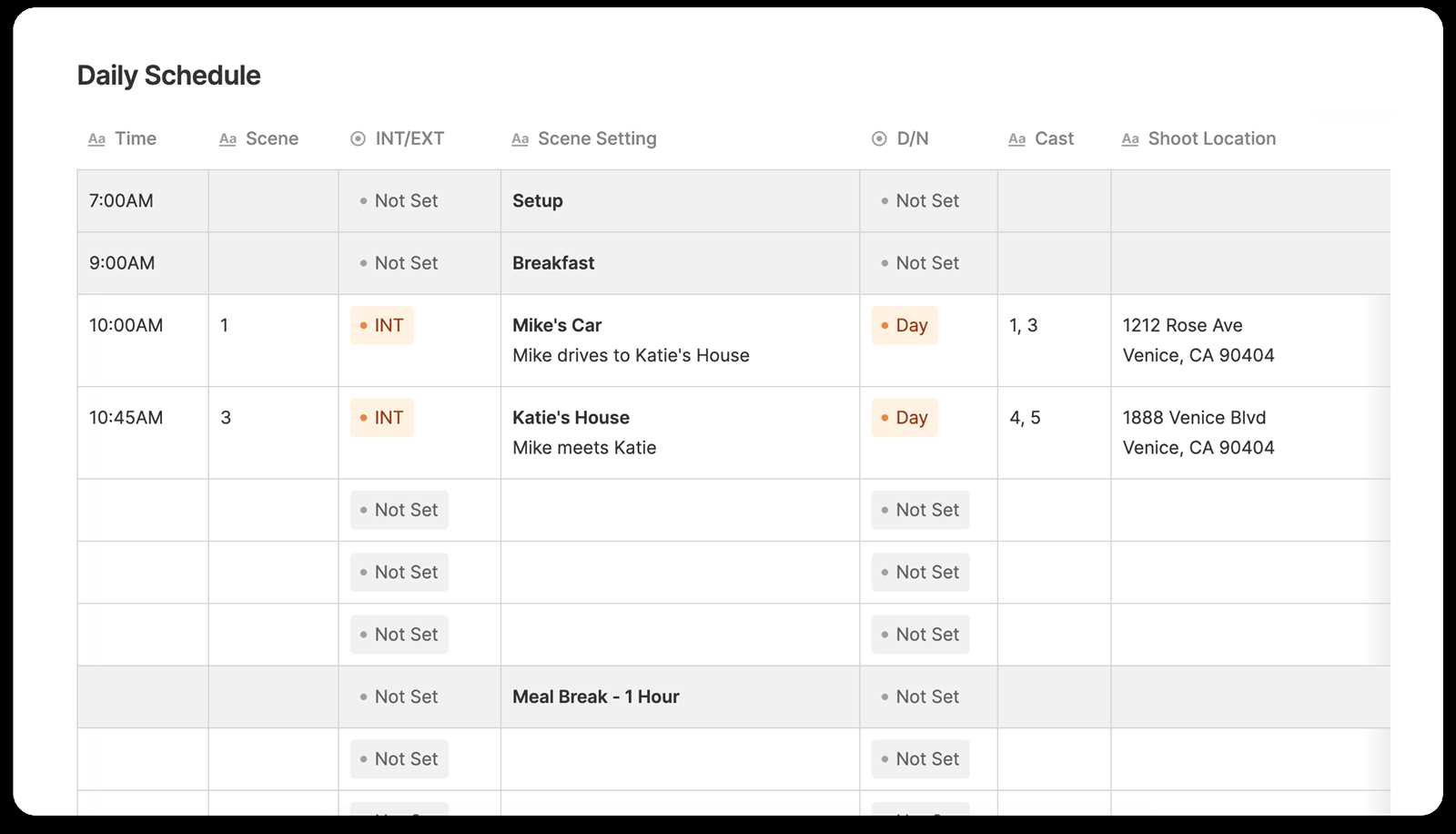
Monitoring the day-to-day advancements of a project is essential for ensuring that everything stays on track. By systematically documenting achievements and challenges, teams can gain valuable insights into their workflow, allowing for timely adjustments and enhanced collaboration. This approach fosters accountability and motivates team members to meet their objectives.
Establishing Clear Goals is a critical first step in this process. Defining specific, measurable objectives for each day enables everyone to understand their responsibilities and the overall mission. By breaking larger tasks into smaller, manageable goals, individuals can focus on immediate priorities while contributing to the bigger picture.
Utilizing a daily log is an effective method for recording progress. This log should include key activities completed, obstacles encountered, and any necessary adjustments to the plan. Regularly updating this document allows for reflection on what strategies are working and where improvements can be made.
Encouraging Open Communication among team members further enhances the tracking process. Daily check-ins or brief meetings provide opportunities for individuals to share updates, discuss roadblocks, and seek assistance. This collaborative environment not only boosts morale but also facilitates problem-solving and innovation.
Lastly, analyzing the data collected over time can lead to valuable insights into patterns and trends. By reviewing the information regularly, teams can identify successful strategies and areas needing attention, ultimately leading to more efficient operations and successful outcomes.
Coordinating Tasks Across Film Crew
Effective collaboration among team members is essential for achieving a seamless workflow in any creative endeavor. By establishing clear communication channels and utilizing structured planning tools, individuals can ensure that responsibilities are well-defined and timelines are adhered to. This approach fosters a harmonious environment where each contributor can thrive, ultimately leading to successful project outcomes.
Communication Strategies
Establishing open lines of dialogue is crucial for maintaining alignment within the team. Regular meetings and updates can facilitate information sharing and address potential challenges before they escalate. Additionally, utilizing digital platforms for task management can streamline communication and enhance accountability.
Task Management Techniques
Organizing tasks effectively is key to optimizing productivity. A well-structured framework allows for the clear assignment of roles and responsibilities, helping team members understand their contributions within the larger project context. Here’s a simple overview of task management strategies:
| Strategy |
Description |
| Delegation |
Assigning specific duties to individuals based on their skills and expertise. |
| Prioritization |
Identifying critical tasks that need immediate attention and addressing them first. |
| Tracking Progress |
Monitoring ongoing tasks to ensure they are on schedule and adjusting plans as necessary. |
Setting Realistic Deadlines for Editing

Establishing achievable timeframes for the editing phase is crucial for maintaining workflow efficiency and ensuring high-quality results. By understanding the various factors that influence the editing process, teams can create a structured approach that accommodates necessary revisions and feedback.
Assessing Project Scope: Before setting deadlines, it is essential to evaluate the overall scope of the project. Consider the length of the material, the complexity of the edits required, and any special effects or enhancements that may demand additional time. This assessment will help in estimating a more precise timeframe.
Incorporating Buffer Time: It is wise to include buffer time within the schedule to account for unexpected challenges or delays. Editing often involves multiple revisions, and having extra time can alleviate pressure, allowing for a more thorough review process and creative exploration.
Collaborating with Team Members: Engaging all team members in the deadline-setting process fosters transparency and accountability. By discussing timelines collectively, editors can gain insights into the availability of other contributors, ensuring that the workflow remains uninterrupted throughout the editing journey.
Regular Progress Reviews: Implementing regular check-ins to assess progress against deadlines can help identify any potential bottlenecks early on. These reviews allow for timely adjustments and ensure that the editing process stays on track without compromising quality.
Ultimately, creating practical deadlines for the editing stage not only streamlines the workflow but also enhances the final outcome, resulting in a polished and cohesive end product.
Resource Allocation in Production Schedules
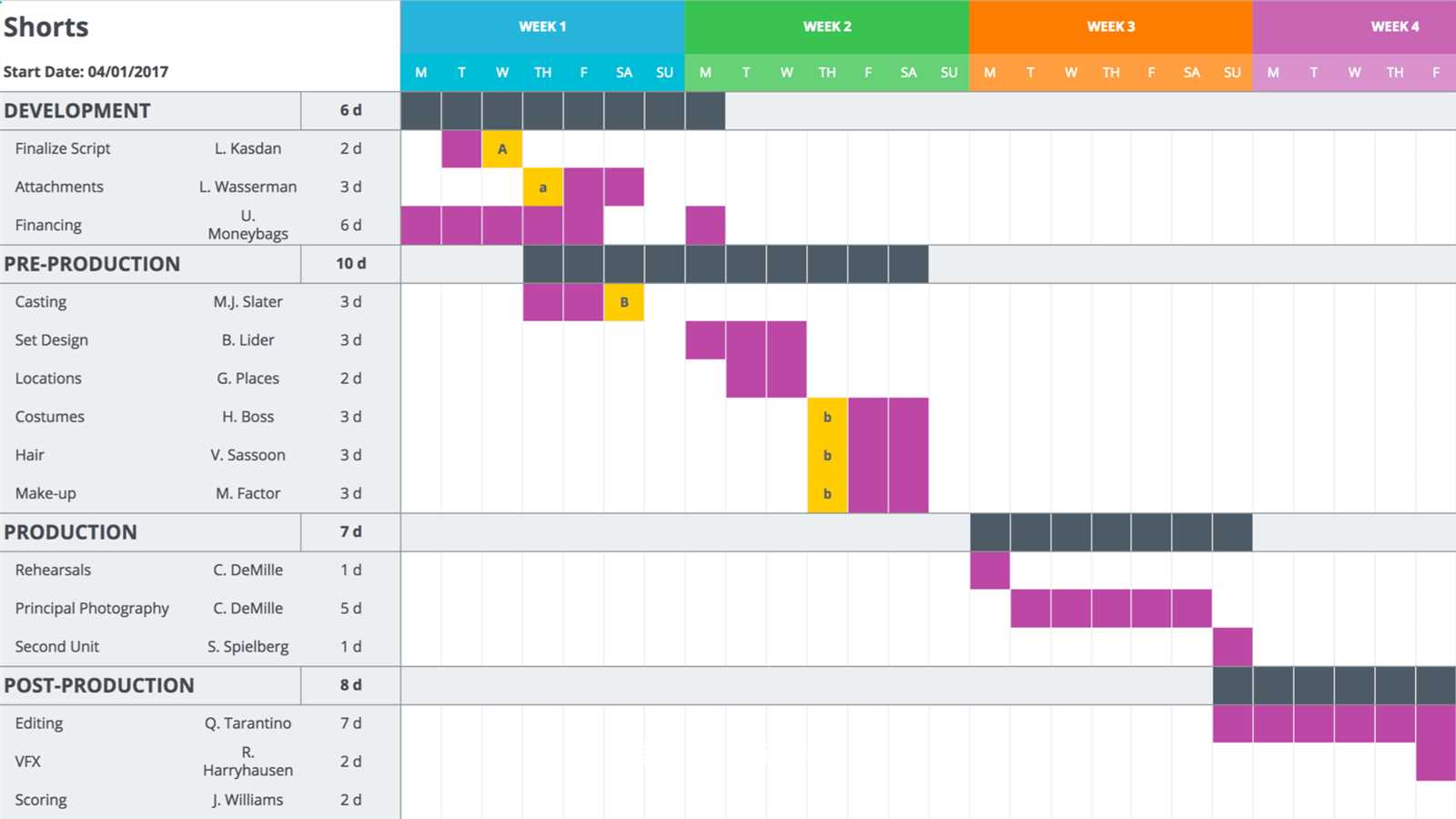
Efficient distribution of resources is crucial for the success of any creative project. Properly managing available assets, including time, personnel, and equipment, ensures that each phase runs smoothly and meets established deadlines. A well-structured plan allows teams to optimize their efforts and minimize bottlenecks, ultimately enhancing overall productivity.
In the context of organizing tasks, understanding the specific needs of each segment is vital. This involves assessing the skills of team members, the availability of necessary tools, and the timeframe for each activity. By aligning these elements strategically, stakeholders can effectively coordinate activities, allocate responsibilities, and adapt to unforeseen challenges.
Monitoring resource utilization throughout the timeline allows for timely adjustments. Regular evaluations help identify underperforming areas and facilitate informed decision-making. Emphasizing flexibility and communication among team members fosters a collaborative environment where everyone can contribute to the project’s success.
Integrating Marketing into Film Timelines
Incorporating promotional strategies into scheduling can significantly enhance the visibility and success of a visual project. A well-structured approach ensures that marketing efforts align seamlessly with various phases of development, from initial concept to release. By synchronizing these elements, stakeholders can maximize audience engagement and create a cohesive narrative around the venture.
Here are some effective strategies for blending marketing initiatives into project timelines:
- Early Engagement: Begin outreach during the initial stages to build anticipation and interest.
- Content Creation: Develop engaging materials, such as teasers and behind-the-scenes content, to share at strategic points.
- Collaborations: Partner with influencers or brands to widen reach and tap into established audiences.
- Social Media Strategy: Plan posts to coincide with key milestones, maintaining momentum and interaction with followers.
- Feedback Loops: Use audience feedback during different phases to refine marketing strategies and adjust messaging.
By prioritizing these aspects, creators can ensure that promotional activities are not an afterthought, but an integral part of the overall timeline, ultimately leading to a more successful endeavor.
Using Templates for Film Budgeting
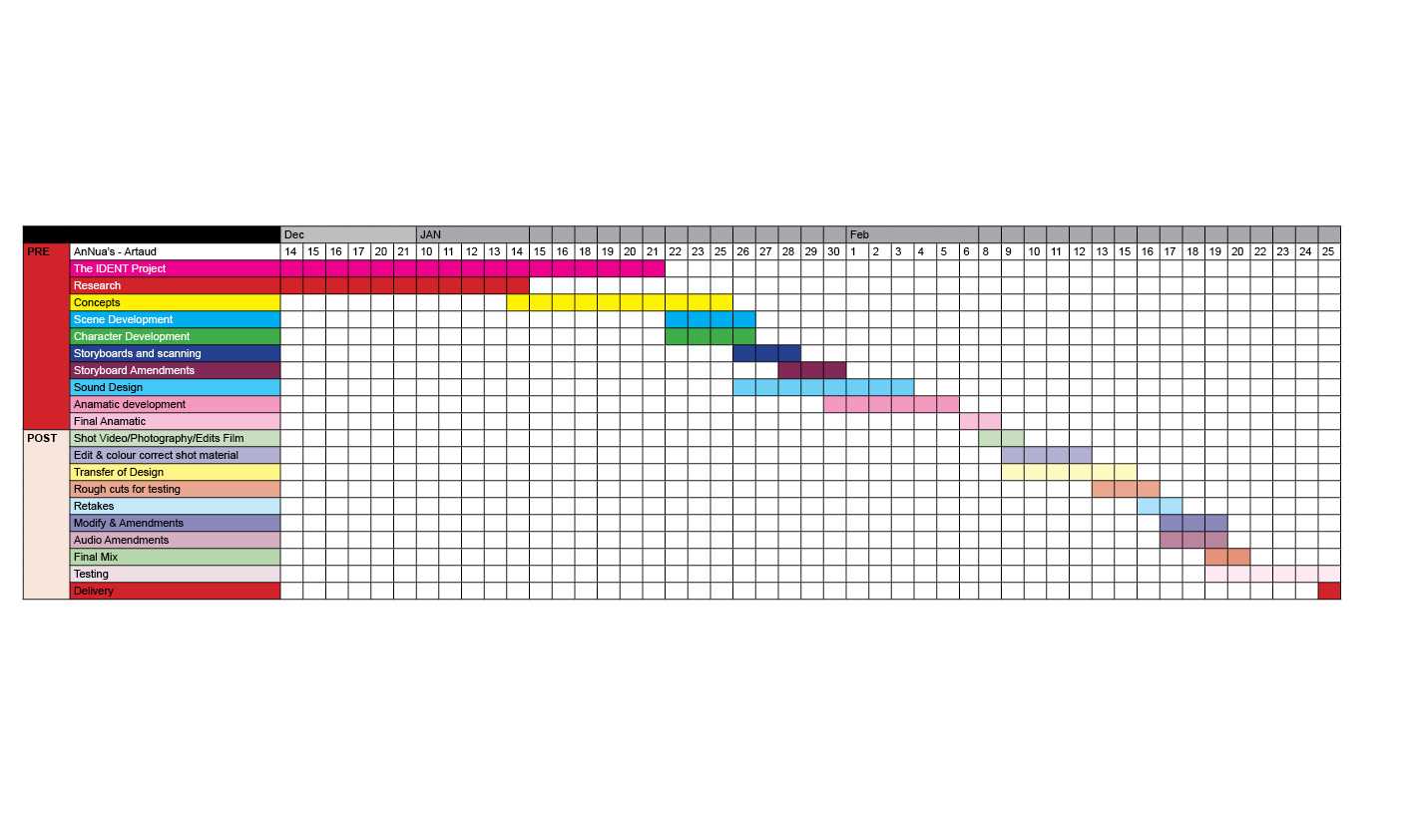
Utilizing structured formats for financial planning can significantly enhance the budgeting process. These organized tools help streamline the allocation of resources, ensuring that every aspect of the project is accounted for, which ultimately leads to better financial management and control.
Benefits of Structured Financial Planning Tools
- Improved clarity in expense tracking
- Enhanced collaboration among team members
- Efficient adjustments to changing financial conditions
- Better forecasting of future costs
Key Components to Include
- Detailed expense categories such as equipment, locations, and personnel
- Projected income sources including sponsorships and ticket sales
- Contingency funds to handle unexpected costs
- Regular review checkpoints to assess budget adherence
Streamlining Film Approval Processes
Efficient management of the authorization procedures is crucial for achieving timely project execution. By enhancing these processes, creators can ensure a smoother workflow, minimize delays, and optimize resource allocation. A well-structured approach to approvals can significantly impact the overall success of a project, allowing teams to focus on creativity rather than administrative hurdles.
Best Practices for Efficient Approvals
Implementing effective strategies can greatly improve the speed and clarity of the authorization process. Consider the following best practices:
- Clear Communication: Establish open lines of dialogue among all stakeholders to facilitate understanding and quick resolution of issues.
- Standardized Documentation: Utilize uniform forms and guidelines to streamline submissions and reduce confusion.
- Dedicated Approval Teams: Form specialized groups responsible for reviewing and granting permissions promptly.
- Regular Updates: Keep all parties informed about the status of requests to maintain transparency and accountability.
Leveraging Technology

Modern tools can enhance the efficiency of approval workflows. Consider integrating technology solutions that offer:
- Automated Tracking: Use software to monitor the status of requests and notify stakeholders of any updates.
- Collaboration Platforms: Implement shared online spaces for teams to discuss and review documentation in real time.
- Feedback Mechanisms: Incorporate systems for collecting and addressing feedback quickly to improve future processes.
Collaborating with Teams on Schedule
Effective coordination among various groups is essential for the successful completion of any project. When individuals work together seamlessly, they can optimize their contributions, ensuring that timelines are adhered to and that objectives are met efficiently.
Establishing Clear Communication
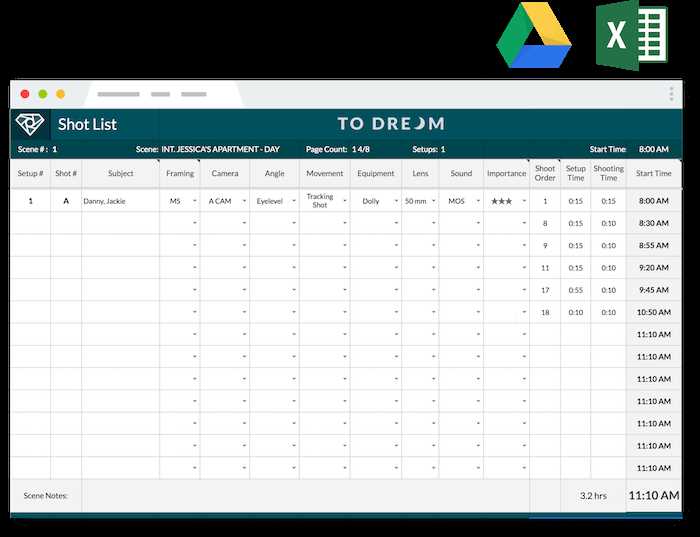
Open lines of communication are vital for collaboration. Here are some strategies to enhance interaction:
- Utilize collaborative tools for real-time updates.
- Schedule regular check-ins to discuss progress and address concerns.
- Encourage team members to share insights and feedback actively.
Setting Shared Goals
Having a common understanding of objectives can significantly boost teamwork. Consider the following steps:
- Define specific milestones that align with overall aims.
- Ensure every member understands their role in achieving these goals.
- Monitor progress collectively and adjust plans as needed.
Adjusting Timelines for Unexpected Changes
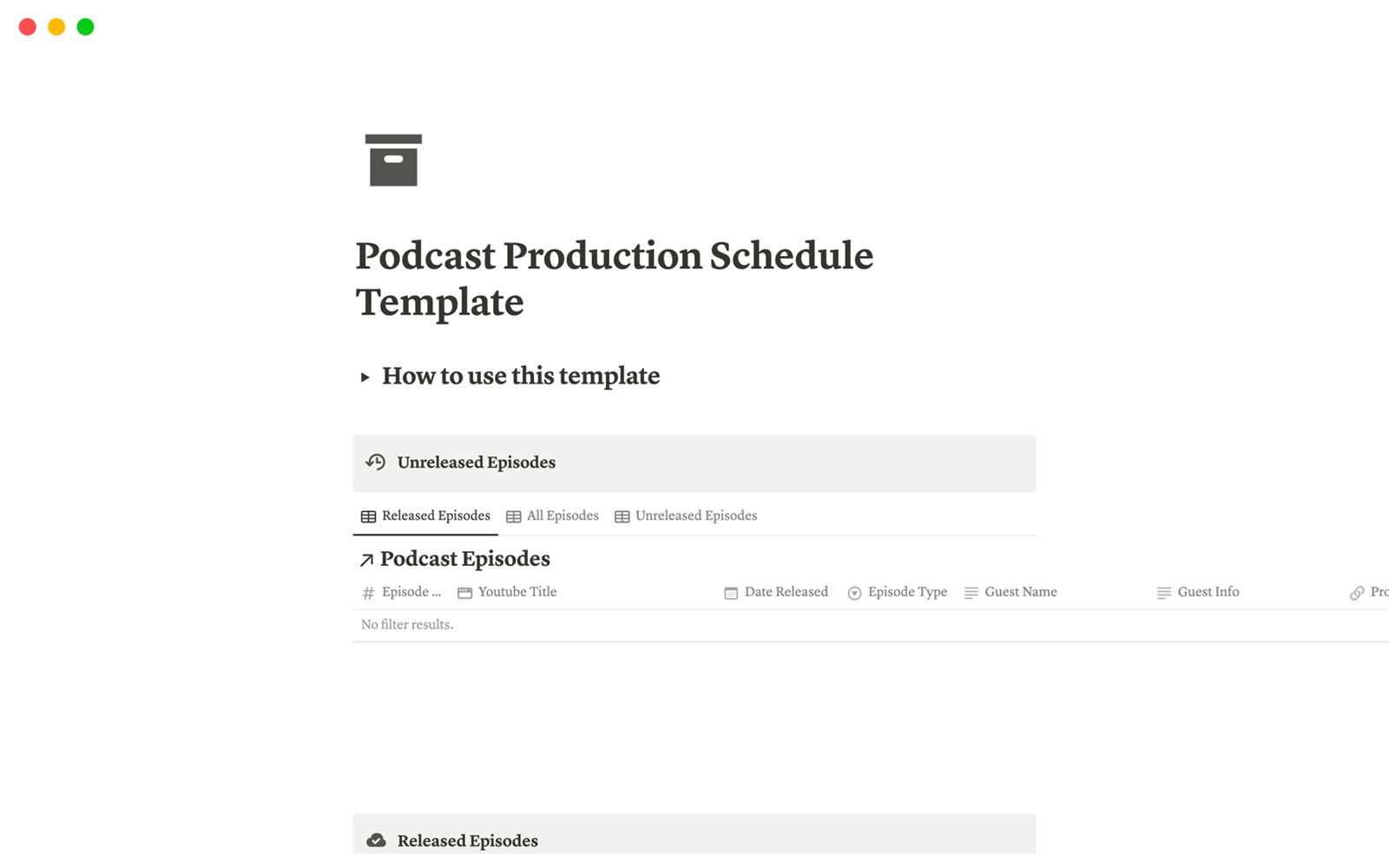
In any project, the ability to adapt to unforeseen circumstances is crucial for maintaining progress and ensuring successful outcomes. Delays can arise from various factors, including resource availability, unexpected challenges, or changes in stakeholder expectations. It is essential to develop strategies that allow for flexibility within the schedule, ensuring that the team can pivot as necessary without losing momentum.
When faced with such challenges, consider the following approaches:
| Strategy |
Description |
| Prioritize Tasks |
Identify critical activities that must be completed first to keep the project moving forward. |
| Communicate Changes |
Ensure that all team members are aware of any adjustments to timelines and expectations to avoid confusion. |
| Allocate Buffer Time |
Incorporate additional time in the schedule for tasks that are prone to delays, allowing for unexpected issues. |
| Review Resources |
Assess current resource allocation and make adjustments to ensure that the right personnel and tools are available as needed. |
Implementing these strategies can significantly enhance the team’s resilience and ability to meet objectives despite interruptions. Continuous evaluation and adaptation will ultimately lead to a more robust workflow and successful project completion.
Finalizing and Reviewing Production Calendar
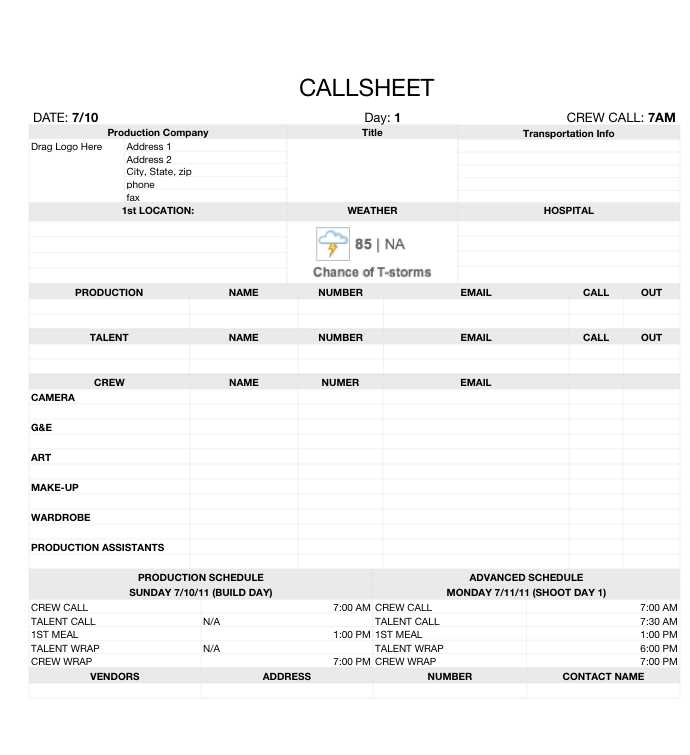
Completing and evaluating a timeline for a creative project is a crucial step in ensuring its success. This phase involves consolidating all essential elements, confirming schedules, and making necessary adjustments to achieve a smooth workflow. By thoroughly examining each aspect, teams can identify potential conflicts, resource allocations, and overall progress.
Steps to Ensure Accuracy
To effectively finalize the timeline, it is vital to follow a structured approach. Start by gathering all relevant details from each department involved in the project. Confirm the dates, resources, and key milestones. Regular check-ins and updates will help to keep everyone informed and engaged.
Key Considerations for Review
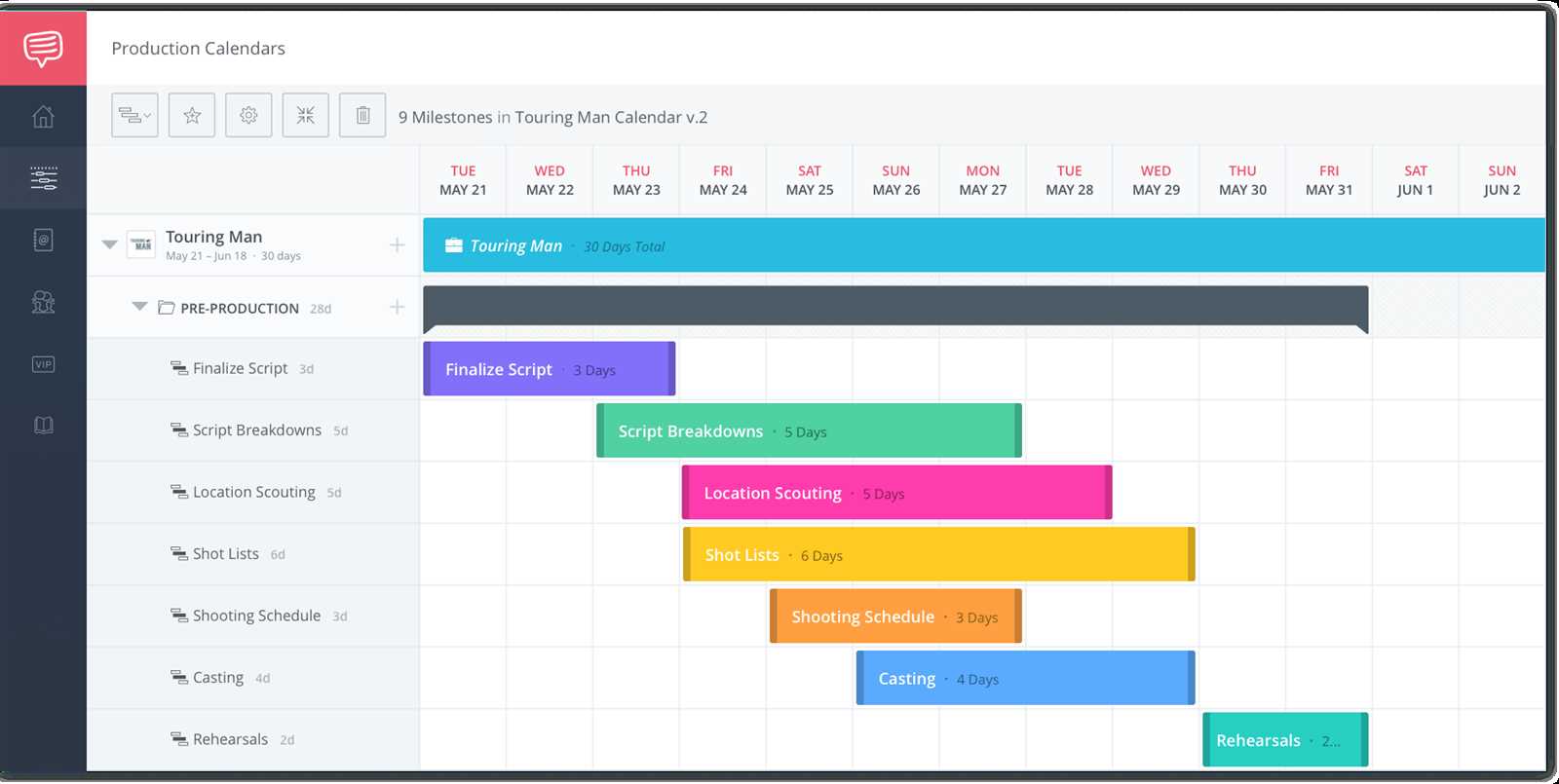
During the review process, focus on the following elements to enhance clarity and efficiency:
| Aspect |
Details |
| Deadlines |
Ensure all dates are realistic and achievable. |
| Responsibilities |
Clearly define roles and expectations for team members. |
| Resources |
Confirm availability of all necessary materials and personnel. |
| Feedback |
Incorporate input from various stakeholders for comprehensive oversight. |
|
